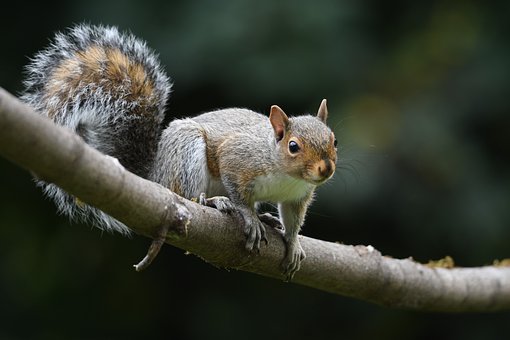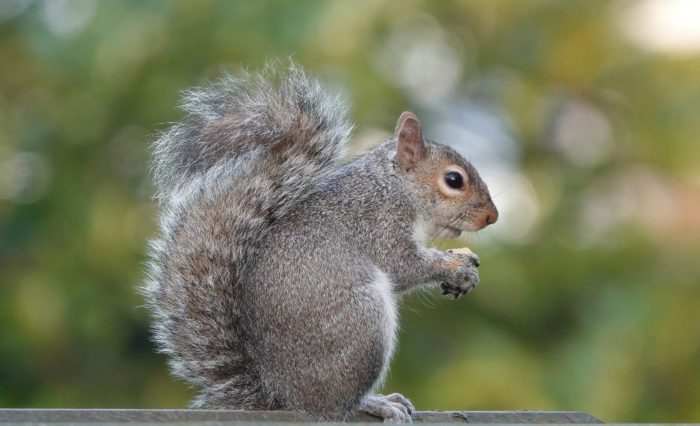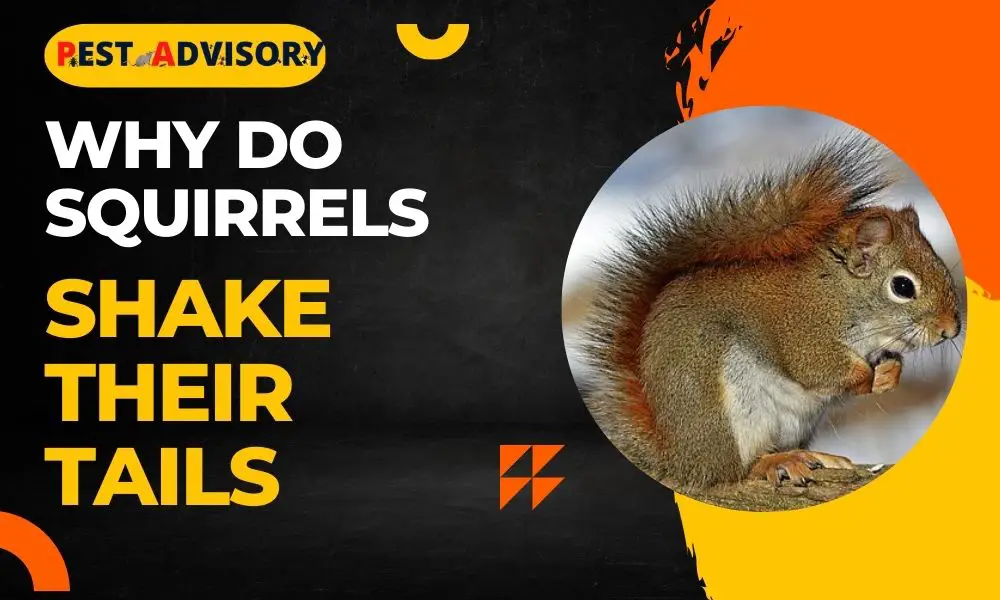If you are an animal feeder like me, I am sure you have tried to feed the cute little bundles of fur, huh?
They never come near you! But if you go near them, or their food or their nests, they start wagging their tails. Do you ever wonder why that is?
Well, let’s make it clear that the wagging of the tail is not a welcome or happy sign for you. While there are multiple reasons for their tail shakes, if you are near, the most likely reason is aggression.
Important Note: If you're tired of pests and want a reliable solution, then you should definitely consider seeking help from a professional pest control company. DIY solutions can be effective, but if you're dealing with a significant pest infestation, you don't want to rely solely on DIY methods. Pest control companies typically don't charge huge fees. You can fill out this form to receive free quotes from the top local pest control companies, and compare the quotes and see for yourself. Then, finally, your pest problems will be eliminated for good.
To understand why squirrels are often seen flicking and shaking their bushy tails, read ahead!
Whom Are the Squirrels Wagging Their Tails At?
Squirrels don’t shake their tails in the air. It is generally directed at someone or something.
- Sometimes it is directed at other squirrels. In this case, it is a form of communication.
- Sometimes it is directed at their mates letting them know that they are interested.
- Sometimes it is directed at predators to let them know that they have been seen and now the predators’ element of surprise is gone.
Do Squirrels wag their tail when happy?
No, squirrels don’t wag their tails when they’re happy, it’s usually a sign that they are startled or alarmed.
Why do Squirrels Shake Their Tails?
Communication
The primary reason for squirrels to shake their tails is to communicate something. For instance, if a squirrel sees a predator close by, then it will start wagging its tail. This communicates to other squirrels that there is a threat around.
The other squirrels are alerted and they too will start shaking their tails so that squirrels who did not see the first squirrel get cautious.
Warning
The shaking of the tail serves as a warning on multiple levels.
First, while defending the territory from other squirrels, the owner squirrel starts wagging its tail. This is a warning to the alien squirrel that “you are in the wrong place bro. And if you don’t leave immediately, I won’t be so sweet anymore”.
Secondly, while collecting food, if two squirrels arrive at the same collection spot, they are seen wagging their tails. This is a warning to each other that “back off. I was here first”.
Thirdly, if they think that their young are threatened they shake their tail. For instance, if you approach a baby squirrel who is sleeping then probably you’ll find the adult squirrel wagging their tail at you.
For the above reasons, the wagging of the tail becomes the first show of aggression for squirrels.
Lastly, squirrels shake their tails when they sense a predator around. In this case, the shaking of the tail warns the predator “see I know you are here, so you cannot take me by surprise, I will fight back and probably escape”.
The prospect of escape takes away the interest of the predator who often deems the squirrel not worth the chase and goes looking for other easy prey.
The shaking of the tail also heats the temperature around it. So in the case of creatures who are sensitive to infrared, their concentration falls only on the tail and not the body. When they attack they are unable to reach anything vital, thus increasing the chances for the escape squirrels.
Balance
Squirrels are always jumping and hopping around. They move on thin branches, swinging wires, and power lines. This requires a huge lot of balance.
The way a tightrope walker extends his arms around and moves them to maintain balance, the squirrels use their tail in the same manner.
While moving through unstable surfaces that are narrow, the squirrels constantly shake their tails. The shaking is usually irregular and from one side to another. This counteracts the movement of the body so that they don’t topple over.
Breaks the Fatal Fall
If the squirrel is unable to maintain its balance they are likely to fall off. But even then their tails save the day.
The squirrels shake their tails while falling. Because of the mass of the tail and its texture, it often serves as a parachute for falling rodents. And when they hit the ground the drop is not that hard.
Helps in Swimming
Squirrels hate water so they do not swim much.
But even if by any chance they end up in the water, then also their tail aids them. It helps them to stay afloat and wade through the water onto shore.
Express frustration
We saw how wagging tails for squirrels is a sign of aggression. Well, shaking is also a sign of other emotions like frustration or distress.
For instance, if the squirrel can see but is unable to reach its desired food then you are likely to see it wagging its tail.
Protection
Another interesting fact about squirrels’ tails is, during rain the squirrels shake their tails above their heads. This blocks the rain and prevents their body from getting wet.

Quivering of Tail
The squirrels do this when they try to attract their mates or impress them. It is mostly seen in male squirrels. They slowly move towards the desired female and alternate with quivers and shivers of their tails. This is the dance they engage in to impress their mate.
What does Squirrel tail position mean
There are many different ways that squirrels communicate with each other, and one of the most common is through tail shaking. When a squirrel shakes its tail, it is sending out a visual signal to other squirrels in the area. The specific meaning of the tail shake depends on the position of the tail when it is shaking.
Upright Position
If the squirrel’s tail is in an upright position while shaking, it usually means that the squirrel is happy and content. This is often seen when two squirrels are playing together or when a mother is grooming her young.
Low to the ground
If the squirrel’s tail is held low to the ground while shaking, it usually means that the squirrel is feeling threatened or anxious. This might be seen if there is another animal in the area that the squirrel perceives as a threat, or if there has been a sudden loud noise nearby.
The specific meaning of a squirrel’s tail shake can vary depending on the context in which it is seen, but these are some of the most common interpretations. If you see a squirrel shaking its tail, take a moment to observe what else is happening around it to try to understand what message it might be trying to send.
Squirrel tail facts
Did you know that a squirrel’s tail is not just for balancing? Their tails also play an important role in their social lives. Here are some interesting facts about squirrel tails:
- A squirrel’s tail is used as a communication tool. They shake their tails to signal danger, to show excitement, or to let other squirrels know they are happy.
- The shape of a squirrel’s tail is unique to each individual and can be used to identify them.
- A squirrel’s tail is covered in thick fur that helps keep them warm in the winter.
- Squirrels use their tails to help them balance when they are climbing trees or jumping from branch to branch.

When to Avoid a Squirrel?
A Squirrel’s tail shaking is indicative of many things. One of them is aggression.
So if you see a squirrel wagging its tail near its food source or nest, you should steer clear of it. Because despite looking so cute and harmless, they can claw or bite you at a moment’s notice.
Final Words
The wagging of squirrel tails is not good news for you if you are there. It means, it does not want you and you need to leave. Or else they can and will try to harm you.
It would not be big damage, but even a small bite can land you in the hospital.
So if you find a squirrel nest in your garden and whenever you go near it there is intense rattling, screeches, and tail wagging, you should call in professional pest control to get rid of them.

